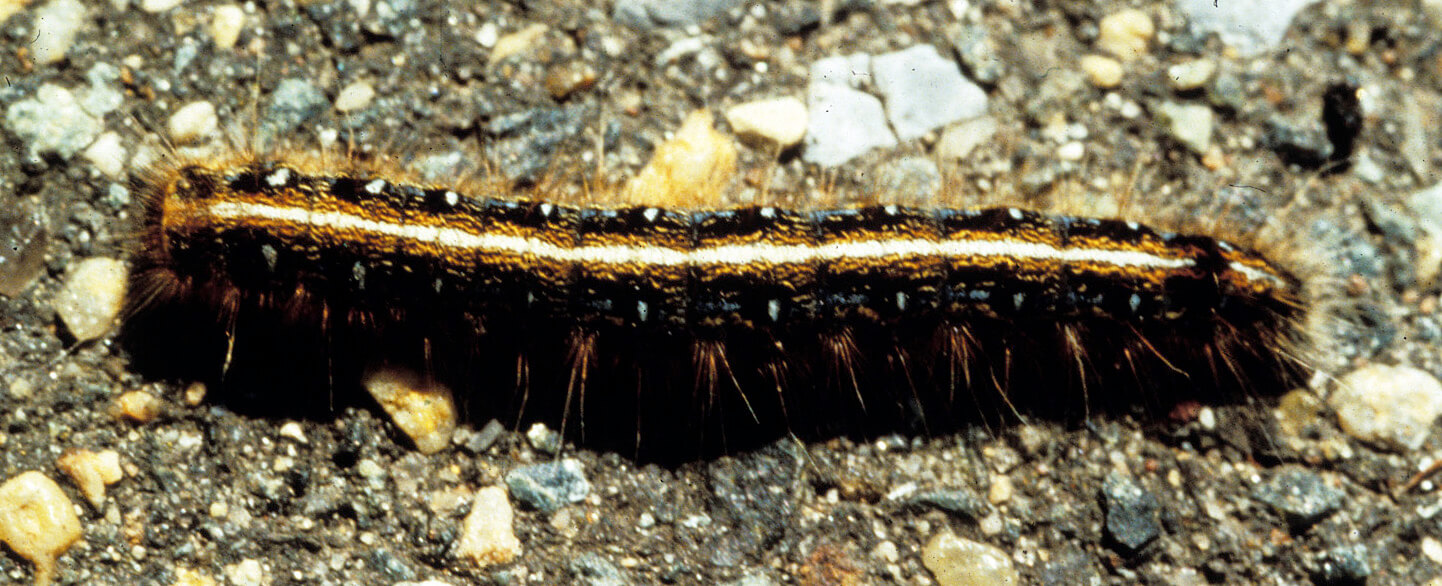Eastern tent caterpillar invades Indiana's flowering trees

Eastern tent caterpillars build their webs in the crotches of trees where branches meet one another or the trunk. (Purdue University photo/Cliff Sadof)
WEST LAFAYETTE, Ind. - The leaf-eating Eastern tent caterpillar has once again settled upon Indiana's flowering trees, but Purdue University entomologist Cliff Sadof said the pests won't kill trees and are easy to control.
Eastern tent caterpillars are dark in color with a white stripe down the back, and they can grow up to 2 inches long. They emerge early in the spring and feed on the leaves of flowering trees just as the leaves begin to break bud. Their nests are white webs, typically formed in tree crotches, the spot where limbs meet one another or the trunk.
"If there are only a few nests and they are low enough to reach, I would recommend removing them by hand," Sadof said. "However, if manually removing them isn't practical because of the number of nests or their location in the tree, there are a couple of pesticides that will do the trick."
When caterpillars are removed by hand, submerging them in a bucket of soapy water will kill them.
"To prevent the offensive odor associated with the decay of large numbers of caterpillars, homeowners should be sure to sweep up the dead insects and toss them into the compost or a trash bin," Sadof said.

Eastern tent caterpillars are dark in color with a white stripe down their backs. They can grow up to 2 inches in length. (Purdue University photo/Cliff Sadof)
For situations where removing Eastern tent caterpillars by hand isn't practical, effective pesticides are those that include Spinosad, Bacillus thuringiensis. While acephate, carbaryl and pyrethroid insecticides can kill Eastern tent caterpillars, Sadof said these insecticides also kill beneficial insects that prevent problems with mites and scales.
Eastern tent caterpillars very rarely affect tree health, but heavily infested trees can be completely defoliated. They also can create a nuisance after they finish feeding.
"After the caterpillars have finished feeding in May, the presence of thousands of 2-inch caterpillars has given more than one homeowner a terrific fright," Sadof said. "This can have the unfortunate result of turning a patio into a quivering mass of hairy caterpillars."
More information about Eastern tent caterpillars is available at https://extension.entm.purdue.edu/publications/HN-68.pdf
Writer: Jennifer Stewart, 765-494-6682, jsstewar@purdue.edu
Source: Cliff Sadof, 765-494-5983, csadof@purdue.edu
Ag Communications: (765) 494-8415;
Steve Leer, sleer@purdue.edu
Agriculture News Page
